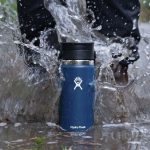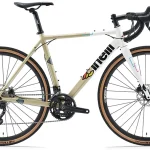Wal-Mart Stores, Inc. reported total company sales grew 9.5% in the month of August to $30.7 billion from $28.2 billion. In the U.S., The Wal-Mart chain saw sales increase 7% to $19.4 billion from $18.2 billion. Same-stores at the Wal-Mart U.S. chain grew 2.8%.
Sam’s Club reported overall sales climbed 7.4% to $3.6 billion from $3.3 billion. Sam’s comps grew 5.2%. Overall comps in the U.S. grew 3%. Wal-Mart International jumped 13.3% to $7.61 billion.
At Wal-Mart U.S., comparable store sales for the period were strongest in grocery and health and wellness. Grocery sales were led by food and consumables, including value-priced meal solutions. Other categories that fared well included flat-panel TVs, digital audio, cell phones and services, GPS units, fitness equipment and camping products.
“The underlying business performance for Walmart U.S. continued to show strength and the improved relative performance has resulted in market share gains,” said Eduardo Castro-Wright, Walmart U.S. president and chief executive officer.
Customers also responded well to school and college seasonal offerings throughout the store, driving sales in denim products, licensed apparel, school supplies and home furnishings. As with other seasonal events, customers are shopping closer to their needs. With many more schools opening later this year, overall business accelerated at the end of the month.
As of yesterday, fewer than 50 Walmart stores in the Gulf Coast area remained closed as a result of power outages and other issues related to Hurricane Gustav.
Sales at Sam’s Club during the August period were driven by strengths in fresh food, dry grocery and consumables, including pet supplies. In general merchandise, apparel benefited from solid sales of fall transitional items. Softness continued in house wares and furniture.
“For the fifth consecutive sales period, Sam’s Club experienced increases in comparable club traffic and ticket with both our Business and Advantage members,” said Doug McMillon, president and chief executive officer of Sam’s Club. “The sales mix continues to move more toward food and consumable items as members buy more basics at Sam’s Club. Our back-to-college sales performance reflected that trend, with necessities driving purchases over more discretionary items. We launched our collegiate membership program in July, which is helping us introduce students to our value proposition.”
Fuel sales continue to be a strong driver of top-line sales growth, with increases both in dollars and gallons sold.
While 13 clubs in the Gulf Coast area were closed for at least one day as a result of Hurricane Gustav, all have since reopened.
Total International sales were negatively impacted by the strengthening of the dollar against the British pound in the August period. In the United Kingdom, ASDA continued a string of strong sales months, again outperforming the market, particularly in core fresh food and grocery categories. Sales were particularly strong in the period leading up to the annual bank holiday on Aug. 25, despite poor weather. Music, DVDs and games performed well and summer seasonal inventory is expected to be in good shape at the end of the season. ASDA opened its 16th ASDA Living store during the period, in Stratford-upon-Avon, where initial sales exceeded expectations.
“While there are increased economic challenges in some of our markets, Wal-Mart International showed a double-digit sales gain,” said Mike Duke, vice chairman, Wal-Mart International. “We continue to respond to the needs of our customers by fine-tuning our product offerings and emphasizing price leadership everywhere we do business.”
Wal-Mart Brazil achieved solid August comparable store sales, driven by
hypermarkets in the Southeast, supermarkets in the South and the Maxxi cash and carry business. Strong categories included consumables, bakery and softlines.
Wal-Mart Canada delivered solid sales results, despite unusually wet weather. Electronics, pantry food and consumables performed well, while apparel sales were helped by strong sell-through of seasonal clearance merchandise. Back-to-school-related merchandise categories were soft, but with strengths in stationery and paper goods.
In China, a solid sales performance at Wal-Mart was driven by promotional activities. Although customer traffic declined slightly due to the Olympic Games, average ticket was higher. Sales at Trust-Mart were driven by increases in both customer traffic and average ticket.
At Seiyu in Japan, August was a challenging month, with overall comparable store sales running in the negative low single digits. Food sales were lower due to a decline in beverage sales, lower tobacco sales and continued softness in chilled foods. General merchandise and apparel sales were lower due to a planned reduction in promotional activities.
Wal-Mart Mexico continued its healthy sales growth in the August period, driven by increases in traffic at the self-service formats. The Mexican consumer continues to be cautious, leading to weak average ticket from lower demand for high ticket items.
Guidance
“We estimate U.S. comparable store sales, excluding fuel, for the September five-week period to be between two and three percent,” said Tom Schoewe, executive vice president and chief financial officer. “Our value proposition and the underlying business remain strong.”















